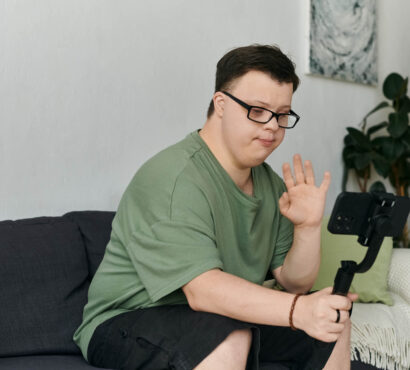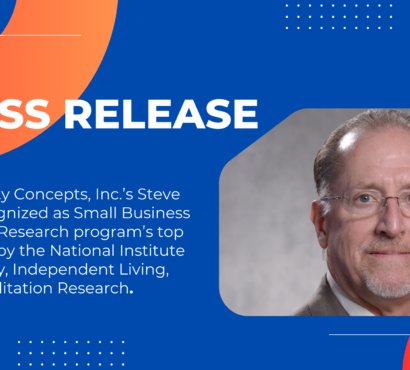Tips for Enabling Technology Pilots
If you are trying to conduct a pilot study but don’t know where to begin, identifying the ideal participants is a great place to start!
Below you will find criteria necessary for qualifying pilot study participants and matching them to CreateAbility enabling technology apps:
PERSON CENTERED PLANNING
Flourish
Best candidates for Flourish would be:
- Individuals with some level of learning disability, or intellectual disability such as developmental (Down Syndrome or Autism); a brain injury, or aging.
- Typical areas of deficit include:
Executive function (memory, sequencing)
Fatigue
Impulsivity
Negative Affect
Individuals who are looking to play a bigger role in their plan, and make progress towards the accomplishment of goals.
Individuals who have access to internet
Individuals who have an Apple or Android device (Or one that can be purchased for them or loaned by provider.)
Individuals with a very basic understanding of technology concepts: on/off, clicking on app, and charging device.
They should be able to:
- See, hear, independently move around in their environment, and easily Tap a tablet or phone.
Exclusion criteria (people who should not be included):
- People with spastic tetraplegia or paraplegia
CAREER EXPLORATION AND DISCOVERY
Employment Pathfinder
Best candidates for Employment Pathfinder would be:
- Transition students or young adults who are not likely to pursue post-secondary education.
- Job seekers with some level of learning disability, or intellectual disability such as developmental (Down Syndrome or Autism), or a brain injury.
- Typical areas of deficit include:
Executive function (memory, sequencing)
Fatigue
Individuals who have access to internet
Individuals who have an Apple or Android device (Or one that can be purchased for them or loaned by provider.)
Individuals with a very basic understanding of technology concepts: on/off, clicking on app, and charging device.
They should be able to:
- See, hear, independently move around in their environment, and easily Tap a tablet or phone.
- Understand written or spoken questions and can select the appropriate spoken and written answer option.
Exclusion criteria (people who should not be included):
- People who are deemed by staff as not likely to receive Community Integrated Employment
- People with spastic tetraplegia
- People with extreme impulsivity
- Individuals who rate low on initiation, execution, or completion
TASK PROMPTING
MeMinder
Best candidates for MeMinder would be:
- Individuals with some level of learning disability, or intellectual disability such as developmental (Down Syndrome or Autism); a brain injury, or aging.
- Typical areas of deficit include:
Executive function (memory, sequencing)
Fatigue
Negative Affect
Individuals who are looking to establish independence but need cues and/or instruction for their responsibilities.
Individuals who have access to internet.
Individuals who have an Apple or Android device (Or one that can be purchased for them or loaned by provider.)
Individuals with a very basic understanding of technology concepts: on/off, clicking on app, and charging device.
They should be able to:
- See, hear, independently move around in their environment, and easily Tap a tablet or phone.
Exclusion criteria (people who should not be included):
- People who are deemed by staff as not likely to be able to follow prompting or curing
- People with spastic tetraplegia
- People with extreme impulsivity
- People who rate high risk in the area of negative affect
- Individuals who rate low on initiation, execution, or completion
QMinder
Best candidates for QMinder would be:
- Some level of learning disability, or intellectual disability such as developmental (Down Syndrome or Autism); a brain injury, or aging.
- Typical areas of deficit include:
Executive function (memory, sequencing)
Fatigue
Impulsivity
Negative Affect
Individuals who have an Android or Apple device (Or one that is purchased or loaned by provider.)
Individuals who have never used technology before.
Individuals who do not have access to internet. (Access only needed by provider to set download tasks. It is then stored in device.)
They should be able to:
- See, hear, independently move around in their environment, and easily Tap a tablet or phone.
- Recognize a QMinder special QR code and know how to scan it in the QMinder app
- Respond to the cue or prompt
Exclusion criteria (people who should not be included):
- People who are deemed by staff as not likely to be able to follow prompting or curing
- People with spastic tetraplegia
- People with extreme impulsivity
- People who rate high risk in the area of negative affect
- Individuals who rate low on initiation, execution, or completion
Evalu8Now
Best candidates for Evalu8Now would have:
- Some level of learning disability, or intellectual disability such as developmental (Down Syndrome or Autism); a brain injury, or aging.
And/or have an area of deficit to include at least one of the following:
- Depression
- Anxiety
- Anger
- Aggression
- Issues with sleep
- Severe impulsivity
- PTSD
- Trepidation and self-doubt
- Negative Affect that causes the individual to only see the world through an anger bias lens.
They should be able to:
- See, hear, independently move around in their environment, and easily tap a tablet or phone.
- Individuals who have an Android or Apple device (Or one that is purchased or loaned by provider.)
- Have access to the internet.
- Level of technology experience needed is between beginner and basic.
Exclusion criteria (people who should not be included):
- People who are deemed by staff as not likely to be able to follow prompting
- People with spastic tetraplegia
- People with extreme impulsivity
- People who rate high risk in the area of negative affect
- Individuals who rate low on initiation, execution, or completion
- Has a history of defiance or not following directions
If you are struggling to get your enabling technology pilot off the ground, do not hesitate to reach out to us here. (We can help!)



